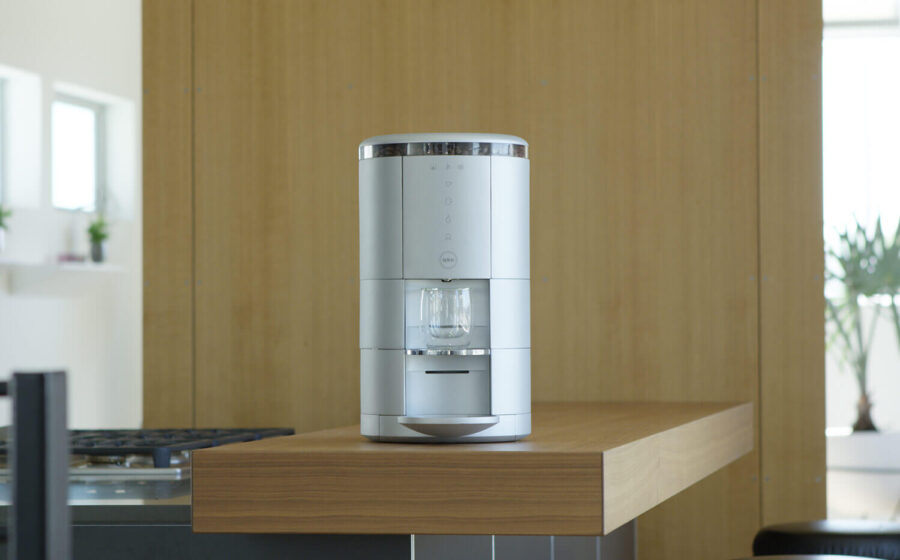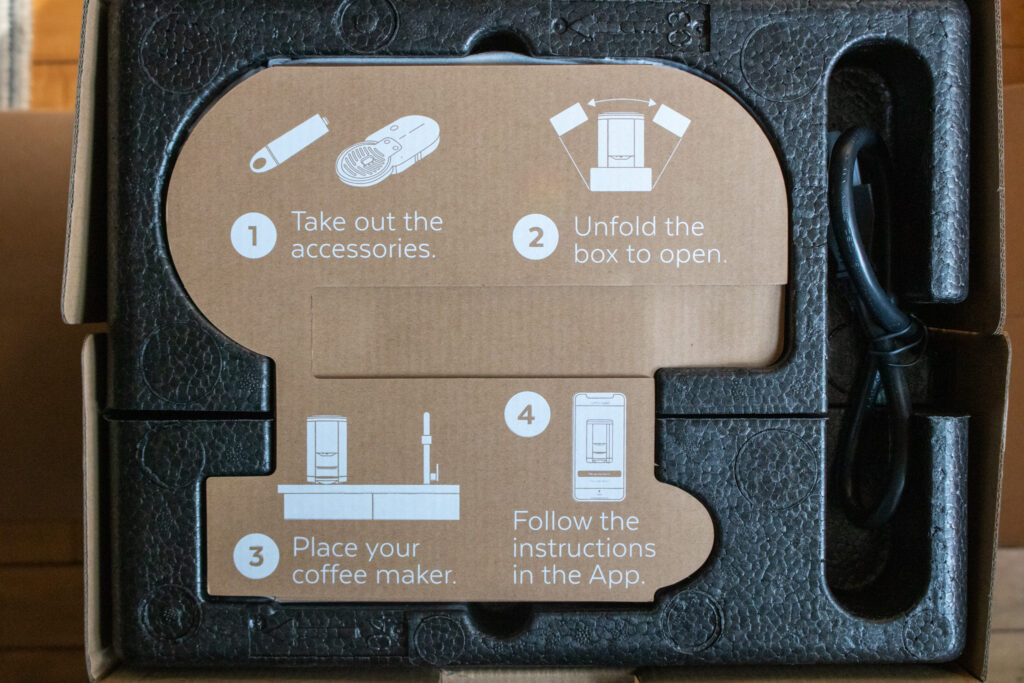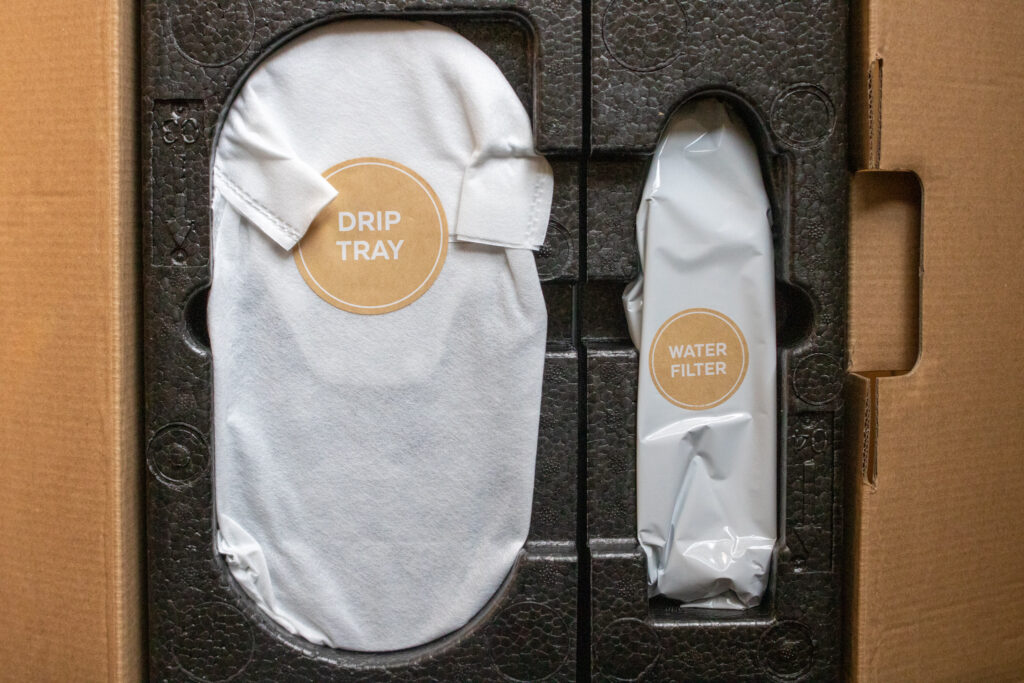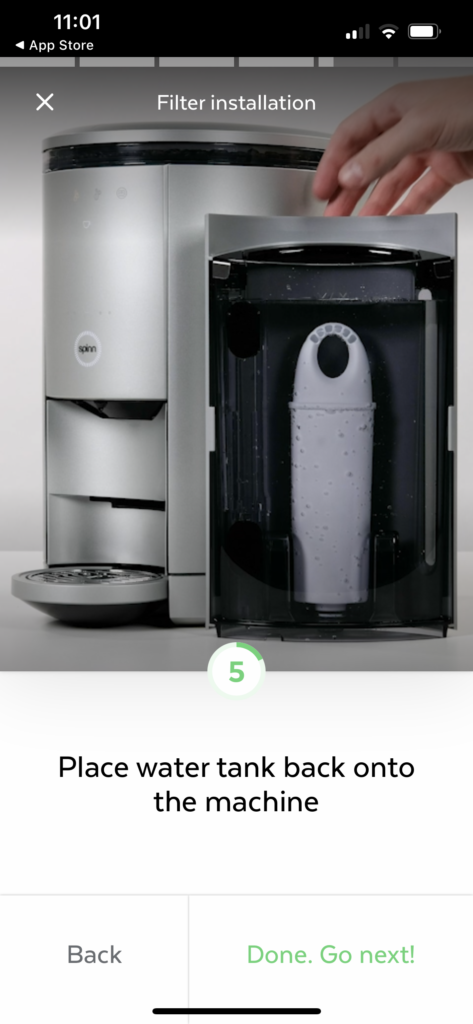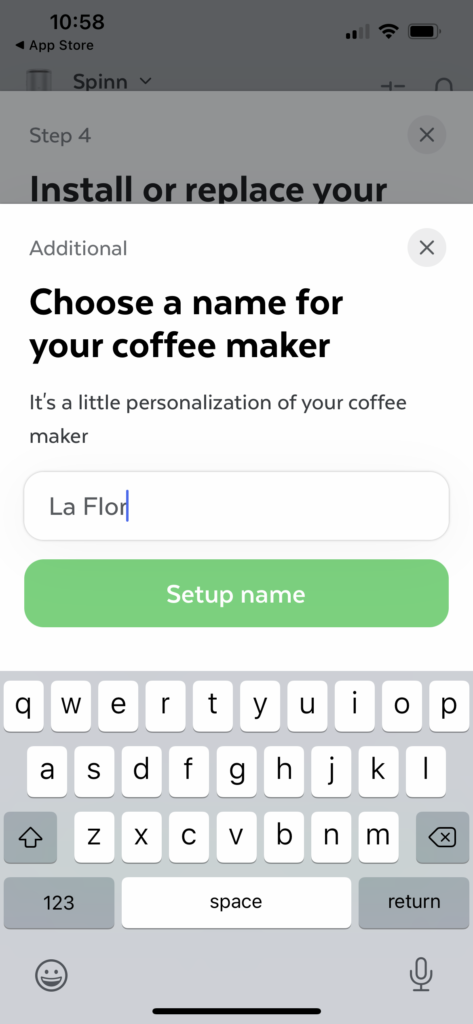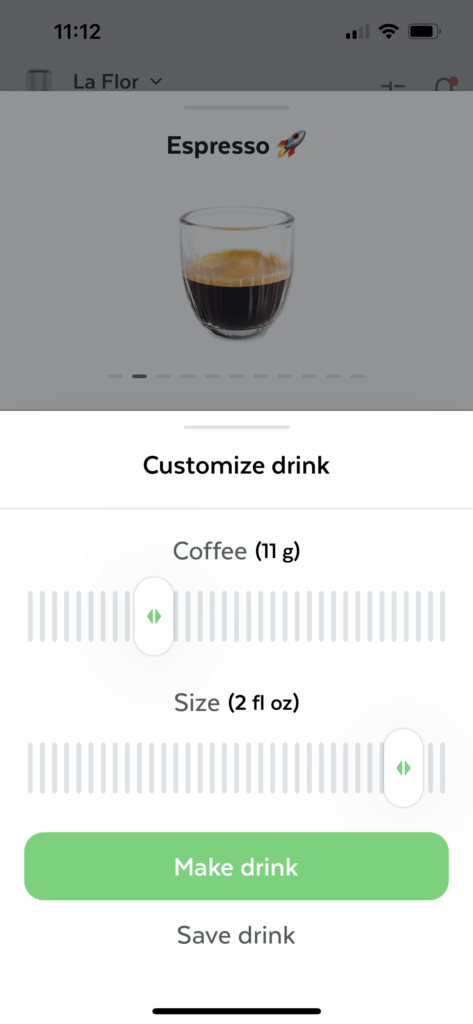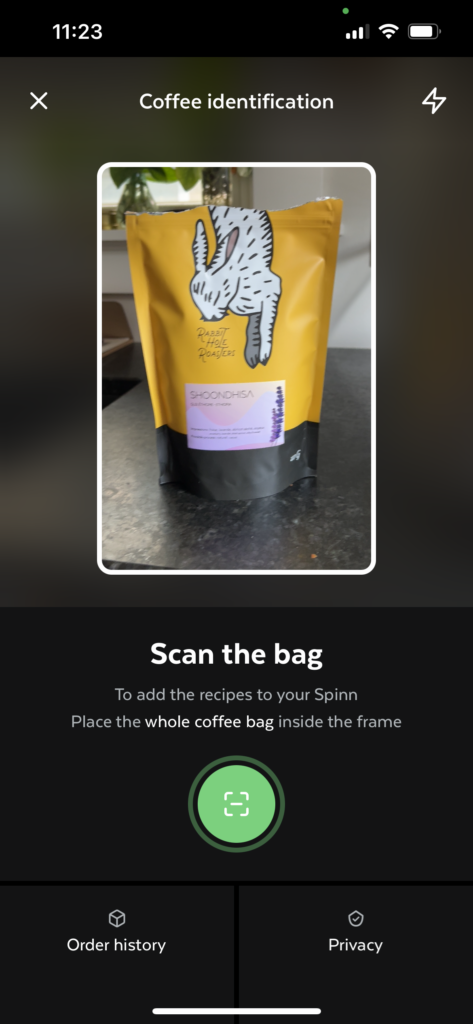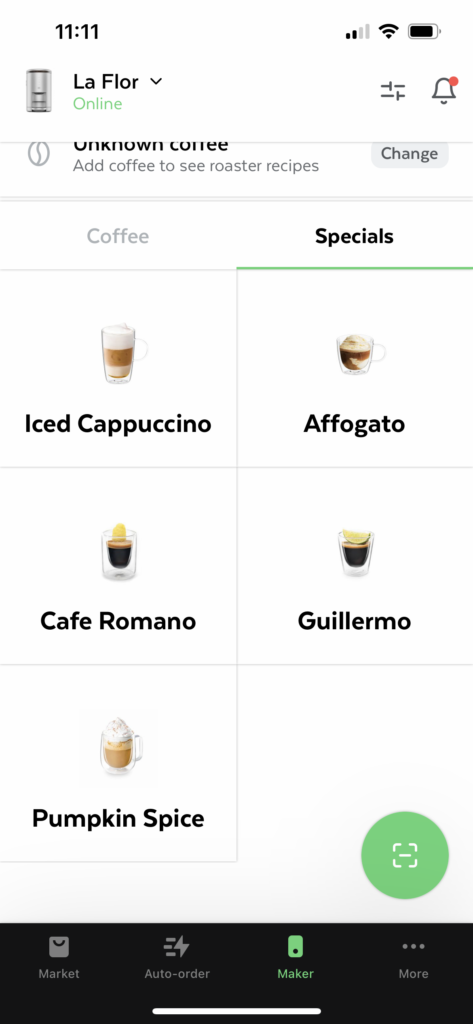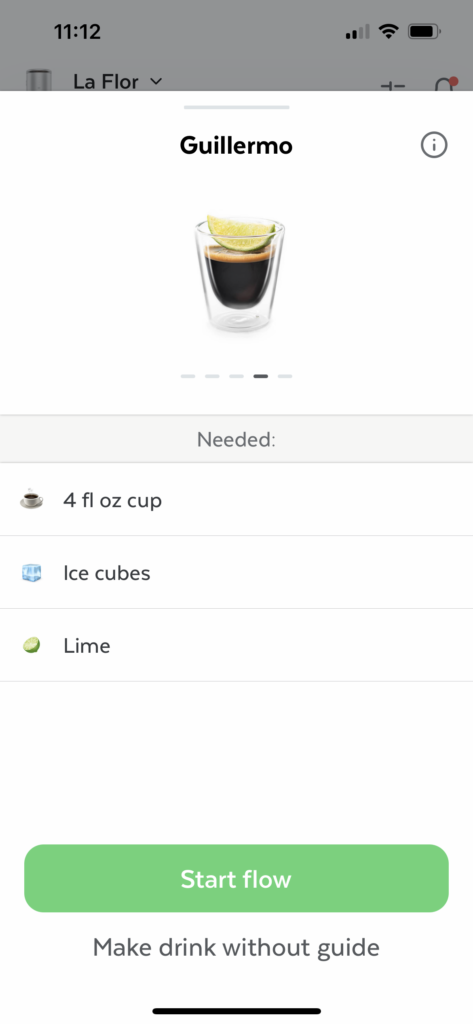We’re excited to announce Fresh Finds, Fresh Cup’s ongoing series reviewing new products and fresh takes on old favorites. In this series, we’ll provide comprehensive looks at some of the coffee world’s most popular brewing devices, gadgets, and new toys—our goal is to give straightforward, yet exhaustive, reviews applicable to coffee novices and experts alike.
We independently select, test, and review products. Learn more about our review policy here.
“Handmade is always better.” For certain things, that’s absolutely true, but I know I’ve fallen victim to applying this maxim unilaterally, particularly in coffee. And there are moments when the meditative practice of grinding beans, boiling water, and pouring delicately over a bed of grounds is transformative and enhances the coffee-drinking experience.
However, for every tranquil brewing moment, there’s a moment where I outright mess up my coffee. Brewing mishaps can read like an infomercial or a parody sketch: “Has this ever happened to you? Have you poured lukewarm water over your ground coffee because you failed to turn your kettle on? Have you ever ground your beans too coarsely, only to brew weak and watery coffee? Have you ever forgotten to tare your scale, so you have no clue how much water you’ve poured?”
The Spinn is an all-in-one coffee brewer that can brew anything from espresso to nitro cold brew. Instead of using pressure or gravity, which you see with most drip and espresso machines, respectively, the Spinn uses centrifugal force to extract coffee and can make a range of beverages. The Spinn also grinds coffee according to whatever drink you’re making, and features an app that lets you brew from your phone while connecting you to a marketplace of roasters to order beans from around the world.
We took the Spinn for a spin—terrible (yet irresistible) wordplay aside, here’s what we think.
Here’s The Deal: Most coffee machines can make just a handful of drinks, but the Spinn is dexterous, using centrifugal force to make anything from espresso to cold brew. Unlike most automatic at-home machines, the Spinn uses whole-bean coffee and doesn’t use any pods, and its WiFi capabilities make it easy to run from your phone. However, the price tag is very high, we thought it executed some drinks better than others, and we had issues with the machine that required us to send it back and get a replacement.
The Rundown: The Spinn Is A Fresh Response To The Growth of Single-Cup Brewers
With the Spinn, I started at the very beginning by asking, “Who is this machine for?” After poking through the brand’s website, I realized that this machine might not be for the tinkerers or hand-brew aficionados but for folks interested in fully automated devices.
“Today, approximately ⅔ of the world’s population consume coffee,” the Spinn website reads. “The drive for convenience, however, spawned an era of super-fast brewed “coffee”, such as K-Cups. The ‘crushed stuff’ that is modern coffee comes with serious costs, however: to taste; to tradition; and to the environment.”
And Spinn isn’t wrong: Statista reports that in 2020, 40% of U.S. consumers own a single-cup coffee setup. While it’s important to note that this statistic doesn’t break down what “single-cup” means, it’s not a stretch to assume that pod-based machines account for most of this number.
The Spinn does everything from grinding to determining how much water to use to brewing. The initial setup is involved but eases you into pretty seamlessly, giving step-by-step instructions both when you unbox the machine and when you set up the app. Once you go through the initial setup and download the app, all you have to do is fill the water tank, load the hopper with beans, and you’re good to go. It’s important to note that the standard Spinn brewer does not come with a milk frother—you can elect to add a detached milk frother as part of a bundle. There are two distinct models available: the Spinn Original, which has a water tank you fill manually and the Spinn Pro, which is water supply line compatible.
Let’s take a minute to talk about beans: the Spinn has a built-in grinder, which distinguishes the brewer from most single-serve machines. Coffee is brewed with freshly-ground beans versus the questionably old grounds you get with pod-based machines.
The Spinn app also has a marketplace where you can order beans from local roasters and then tell the machine what beans are in the hopper (there’s a scanning feature if you buy your coffee on a different platform or at the grocery store). If a roaster is partnered with Spinn, they can create recipes specific to their coffees — so, let’s say if you order Tropical Weather, a blend from Onyx Coffee Lab, and tell the Spinn that’s what you’re brewing, you can get recipes that are tailored to that specific coffee. The Spinn isn’t limited to just coffees in the marketplace: you can brew whatever you’d like and adjust brew recipes to your preference manually.
We tested the Spinn by brewing every coffee available on the app, save a few exceptions (the app gives recipes for specialty drinks, which you need ingredients like syrups for). Starting with espresso was a bit of a disappointment. The Spinn offers a few espresso ratios to play with, and all of them tasted both slightly over and under-extracted. None of them were too far off of what I’d expect from an espresso shot—I still tasted distinct flavors and got sweetness from every shot I had—but drinking these shots reminded me of being behind the bar, trying to dial in espresso, and getting a shot that left me confused. Should I tighten the grind? Drop the dose? The Spinn allows you to customize recipes (you can change the dose and size of each offering from its default settings, but you can’t change the grind setting, as far as I can tell) but it was challenging for me to try to calibrate a shot based on variables I could control.
You might be asking if the Spinn makes “true” espresso: that depends on what definition of espresso you ascribe to. A core component for espresso, one might argue (and the Specialty Coffee Association would agree) is pressure—espresso machines use pressure to extract flavor out of ground coffee, and that’s not what the Spinn does. You still get a drink resembling espresso in size and strength, but perhaps this added element of pressure is what makes the espresso from the Spinn feel a step away from what you might get from a traditional machine. The folks at Seattle Coffee Works do a great job of explaining this if you want to learn more.
When I moved on to drip coffee, I had the same issues. Yes, the coffee from the Spinn was significantly better than anything I’d had on a pod-based machine, but not as good as a quality drip machine or pour over setup. However, I thought back to who this machine is for and where on the spectrum of quality I thought the coffee from the Spinn landed—while it didn’t hit the highs of a beautifully brewed pour over, it was lightyears away (in a good way) from what you’d get on a pod-based machine.
Where the Spinn really stands out in its cold drink options. The Spinn’s cold brew had the distinct taste of cold brew, but instead of steeping overnight was ready in seconds. Likewise, the nitro cold brew was surprisingly unctuous and foamy, which seems…kind of like a miracle? Like, how did it do this?
The Spinn also stands out in consistency. Every shot of espresso tasted the same, which might not seem like a big deal, but if anyone has tried to dial in espresso on a home machine (or even a commercial machine in a cafe, for that matter), you know how difficult it can be to replicate your results. If you find a brewing ratio or recipe on the app you really love, you can count on it being consistently delivered to you on this machine.
Things to Consider: The Spinn Is Expensive! Also, What Is New Technology Trying To Solve?
You can’t look past the price tag of this machine: it’s almost $1,000, which is more than the cost of an espresso machine and grinder. The price tag is also much higher than more mainstream pod-based brewers, which makes the Spinn an unlikely challenger to popular models. In the long term, the Spinn saves money because most pod-based machines use a paltry amount of coffee in their pods, and the pods will cost more than buying whole bean bags. Still, it’s hard to overcome the initial sticker shock. As of this writing, there’s a holiday sale on the machine, bringing the price down to $700, but that’s still a lofty sum to pay.
I had to send back the first model I received. The customer service experience was seamless: I emailed Spinn and said the machine wasn’t working, hoping they’d help troubleshoot. Instead, they could see internal damage during transit, had me send back the device, and I had another one within days.
Sometimes, new gadgets attempt to solve non-existent problems. “What if you could brew your coffee from bed?” is the first question a video explaining the Spinn brewer asks when you land on the homepage. Is this a demand that’s gone unanswered until now? I doubt it, but I can’t be sure. But I don’t want to gloss over the ease of use the Spinn provides because there are many situations where using a kettle or manually brewing coffee could be cumbersome or unavailable.
The Spinn’s biggest strength is its versatility. If you enjoy brewing various coffee drinks, this is a superb option—especially in spaces with varying tastes, like an office. However, how many people drink the same coffee drinks every morning? Unless you’re looking for the flexibility of brewing whatever suits your fancy, the Spinn might not be the investment piece you need for your home setup.
The Spinn is an innovative brewer, and I’m excited about the future of the mighty centrifugal machine. The Spinn’s ability to brew tasty cold brew by the glass could transform the device into a viable option for cafés, or the technology might become so streamlined as to lower the price point—this is a machine to keep on your watch list.



